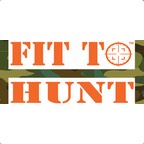Whitetail Scouting
Proper scouting is by far the most important part of preparing for the upcoming archery season. Even if your equipment is tuned to perfection, you shoot all summer long, and you hunt a prime piece of whitetail habitat come opening day, your chances of putting a mature buck on the ground are greatly reduced if you don’t scout efficiently now. The late winter and early spring months offer an excellent chance to lay the groundwork for your fall scouting plans. Foliage is scarce and deer are much more receptive to pressure now than at any other time. Your presence will make a very low impact on deer patterns and movement. Deer sign is also extremely plentiful. Snow and soft soil makes it extremely easy to find and read the sign and pick out your areas of concentration for the fall. Here are some things you should be looking for.
Major Travel Corridors
Deer are creatures of habit, and typically continue to use the same travel routes year after year. They will also almost always follow the path of least resistance that offers the most cover Although feeding habits change as the year progresses, many of these trails are used heavily year round, particularly those used as creek crossings and through pinch points. Hillside benches and saddles between ridges are also great places to scout. If you are hunting an agricultural area, locate routes from bedding to feeding areas and make note of where the most activity is occurring on the food source itself. Look for large sets of buck tracks in all of these locations. Topographical and satellite maps will be your best friend, especially when hunting new or large tracts of land. Use them not only to start your search, but also to mark your hotspots for your fall trips.
Shed Antlers
As you know, bucks drop their antlers in the early spring months every year, and re-grow a new set. Many mature bucks live in the same small area the majority of their lives. Searching for shed antlers is the perfect way to locate that core area, and can help you take inventory of the deer that made it through the season. You don’t need to be a seasoned hunter to know that the best places to look are places that deer are spending most of their time. Many of these places are the same as those you’ll be scouting anyway, and offers you an opportunity to kill two birds with one stone. Major trails from bedding to feeding areas, the bedding and feeding areas themselves, and trails or bedding areas on South facing slopes tend to be the most productive. If you find a big shed or a matched set for that matter, not only is it a great indicator of that bucks’ core area, but a great display piece as well.
Rubs and Scrapes
There is no doubt that rubs and scrapes mean the presence of bucks in a particular area. They are extremely easy to spot and can help point you in the right direction to hanging a great pre-rut set. However, you should not select a stand location based on last years rubs or small old scrapes. Make note of the areas they occurred in and return a few weeks prior to hunting that area to re-scout and find new rub lines. Large breeding and community scrape lines are used year after year, and if you find one, it is definitely a spot you will want to revisit and possibly hang a stand.
An important thing to remember while on any scouting trip is to create as little disturbance as possible. Even though mature bucks will tolerate more pressure during the late winter and spring months, you should still take a low-impact approach. Try to wear knee high rubber boots and some type of gloves if possible. Also avoid spooking deer as much as possible, just as you would if you were actually hunting. Spring is a great time to cut shooting lanes on properties where you have already patterned deer and hung hot sets. It is better to make a habitat change now than to wait until the season starts. Remember, you are entering a whitetails bedroom, living room, and dining room. If someone came into your home and rearranged your furniture and sprayed a foul scent everywhere, you would take notice too. Scout hard now, stay low key, and put it to use to bag a mature buck in the fall.









